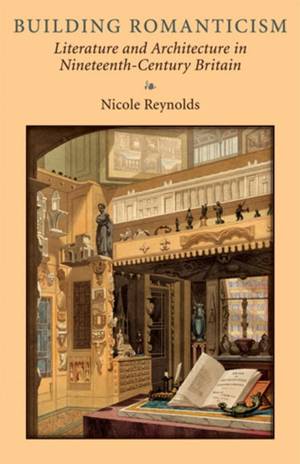
- Afhalen na 1 uur in een winkel met voorraad
- Gratis thuislevering in België vanaf € 30
- Ruim aanbod met 7 miljoen producten
- Afhalen na 1 uur in een winkel met voorraad
- Gratis thuislevering in België vanaf € 30
- Ruim aanbod met 7 miljoen producten
Zoeken
Building Romanticism
Literature and Architecture in Nineteenth-Century Britain
Nicole Reynolds
Hardcover | Engels
€ 109,45
+ 218 punten
Omschrijving
Building Romanticism sets the literary culture of Romantic Britain within the context of the period's architectural productions in order to recover a relationship between these arts that, though deeply valued by writers and architects of the day, has been neglected by modern scholars in both fields. Toward this goal, Nicole Reynolds explores the centrality of architecture and architectural tropes to Romanticism's dramatic reconceptualization of the individual subject and of the world that subject inhabits.Focusing on the correspondence between the period's built environments and its literary pursuits, Building Romanticism argues that at this turbulent moment in British history a number of politically charged and aesthetically resonant architectural spaces, both real and imagined, negotiated intense anxieties about shifting notions of gender and sexuality, increased class mobility, the individual's uncertain place in history, challenges to the British national character and to the project of nation building, and the very form and function of art itself. By tracing the reception of Romantic topoi--rhetorical and literal common places--through the nineteenth century, this book explores how Victorians remodeled Romanticism, its ideological preoccupations and cultural artifacts, according to their own era's social agendas.
Specificaties
Betrokkenen
- Auteur(s):
- Uitgeverij:
Inhoud
- Aantal bladzijden:
- 240
- Taal:
- Engels
Eigenschappen
- Productcode (EAN):
- 9780472117314
- Verschijningsdatum:
- 11/10/2010
- Uitvoering:
- Hardcover
- Formaat:
- Ongenaaid / garenloos gebonden
- Afmetingen:
- 150 mm x 229 mm
- Gewicht:
- 476 g

Alleen bij Standaard Boekhandel
+ 218 punten op je klantenkaart van Standaard Boekhandel
Beoordelingen
We publiceren alleen reviews die voldoen aan de voorwaarden voor reviews. Bekijk onze voorwaarden voor reviews.








